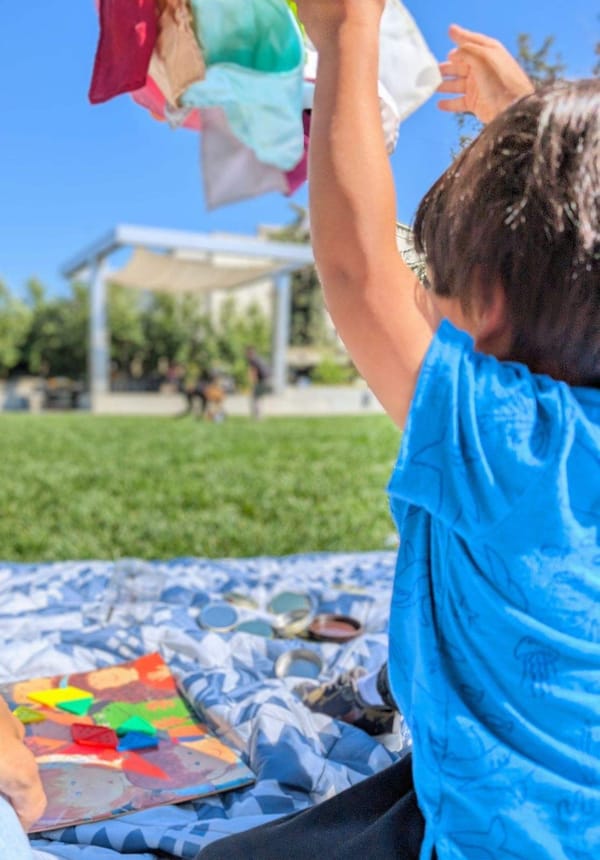Every week, we get asked:
What is a Nook?
And just as often, we find ourselves asking a deeper question:
How does a Nook form?
Not just as a place—but as a living rhythm between people, spaces, and needs.
This series is our way of exploring that—out loud, in the open.
We’ll share stories of Nooks that are forming in real neighborhoods.
We’ll notice the invisible work it takes to align a parent, a facilitator, and a space partner.
We’ll ask:
What kind of care feels local, human, and shared?
How do you grow it ?
What kind of technology supports care?
In continuation of our earlier post on how Nooks form, I wanted to pause and reflect on what happens inside them—what unfolds once a Nook begins.
Since the last time I wrote about Nooks in this series, a lot has happened. As always, changes come—some welcome, some challenging—but they’re all part of the work. If you're curious about updates, you’ll find more details in our monthly newsletter. But today, I want to reflect on something else—something we haven’t spoken about as much.
Over the months, we’ve shared a lot about play—how children explore, how facilitators support, how spaces come alive. And for good reason: play is at the heart of Nooks.
But there’s also a layer we haven’t always captured: the quiet processes that happen around that play. The background rhythms that make a Nook work. The subtle observations. The real-time decisions. The micro-adjustments that facilitators make without calling attention to them. The trust loops form between parents, caregivers, and space partners. These aren’t visible in photos or flyers, but they’re essential.
As we continue working to make Nooks accessible for families in different neighborhoods, I’ve been thinking more deeply about these inner workings. What happens once a Nook begins? What do the children feel? What do the facilitators carry? What do parents gain?
We’ve noticed that for children, at first, they observe. Then slowly, they start to engage—building, exploring, playing. That moment when a child finally feels comfortable enough to play freely is powerful. It’s often subtle, but we all feel it—facilitators, parents, everyone in the space. It’s joyful.
Facilitators play a huge role in this. They are deeply attuned to the environment and the children in it. They don’t just manage the space—they actively shape it. Many of them come to us after being inspired by research or thoughtful writing on play and development. They understand the importance of creating a space for unstructured, child-led exploration, and they generously dedicate themselves to making it happen.
Parents benefit too. Nooks allow them to stay close while still having space to work, take a call, or simply have time to themselves. They can focus without disconnecting. Over time, a sense of community often builds—conversations happen, trust develops, and relationships begin to form.
It's not just care; it's a micro-community in action.
So much of what makes a Nook work isn’t about big structures or programs. It’s about what happens between people. A child becomes more confident. A facilitator notices and responds. A parent starts to trust the space. And all of this happens in a room that likely already existed—in a neighborhood.
That’s what I’ve been reflecting on lately. Not just how Nooks function, but how they quietly take shape through people, trust, and small shifts that add up.
This is also why building entirely new neighborhood spaces isn’t our goal. We’re not trying to construct new centers or facilities. Instead, we’re focused on using what’s already available—spaces that are often underused during certain hours, like museum classrooms, studios, cafés, and community rooms. These are familiar places that already hold meaning for the neighborhood.
We believe the value is already there. It just hasn’t been activated in this way yet.
By working with existing space partners, we strengthen what already exists. We add a new layer of purpose to a space, without changing its identity.
It becomes part of a shared rhythm: one where parents find support, children explore, and the space itself stays alive and used—without disrupting its original purpose.
It’s a gentle way to build care systems—one Nook, one room, one neighborhood at a time.
Could This Happen in Your Neighborhood?
We believe Nooks can form anywhere people are ready to come together—with care, trust, and a shared sense of purpose.
You don’t need a big budget, a new building, or a formal program.
You just need a small spark—someone asking: Could we try this here?
Coming up next:
In the next post in this series, we’ll begin exploring how distributed systems—and ideas from decentralized technology—might shape the way Nooks grow and learn. What if each Nook could adapt locally, while still contributing to a shared understanding across the network? How can technology support care without centralizing? We’ll dig into those questions next.
Want to Help Us Explore This?
We’re in the early stages of thinking about how distributed systems—like federated learning, local agents, and trust networks—might support the way Nooks form and evolve.
If you're someone who’s excited by questions like:
- What would it look like for neighborhood systems to adapt and evolve through local learning?
- What does trust look like between small, semi-autonomous nodes in a network?
- How can technology stay responsive to context?
We’d love to connect.
You might be a researcher, builder, parent, or simply someone interested in designing more human-centered, decentralized systems. If this resonates, reach out.
More soon.
